IC-Light V2 is an advanced AI image processing tool designed to enhance images with superior quality and precision. Utilizing cutting-edge Flux models and VAE technology, it offers users the ability to manipulate lighting and maintain exceptional detail preservation. This tool is suitable for various applications, including professional photography, e-commerce, and content creation.
IC-Light V2 - Advanced AI Image Processing Tool
IC-Light V2: AI image enhancement tool with Flux models and VAE technology. Transform lighting and enhance image quality. Try our free demo today.
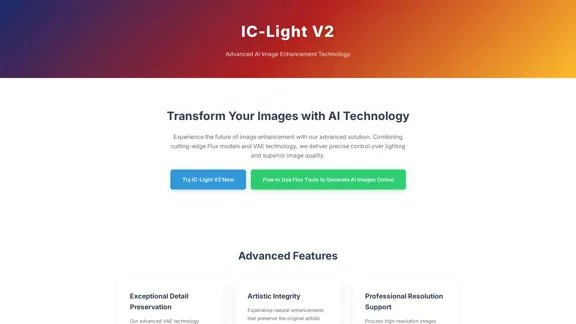
Introduction
Feature
-
Exceptional Detail Preservation
IC-Light V2 employs advanced VAE technology to ensure that images retain their finest details during processing, setting new standards in image quality.
-
Intelligent Lighting Control
The tool revolutionizes lighting manipulation with support for multiple lighting directions, ensuring natural-looking results while preserving image integrity.
-
Professional Resolution Support
Users can confidently process high-resolution images, with support for dimensions ranging from 256x256 up to 1024x1024 pixels.
-
Advanced Processing Pipeline
IC-Light V2 utilizes state-of-the-art deep learning techniques, including text-conditioned relighting and background-conditioned lighting adaptation.
-
Rapid Processing Times
The tool boasts quick processing times, typically between 10 to 20 seconds per image, enhancing user efficiency.
-
Batch Processing Support
Users can process multiple images simultaneously, streamlining workflows for projects requiring extensive image enhancement.
How to Use?
- Upload your image to the IC-Light V2 interface, ensuring it is in a supported format (JPG, PNG, WEBP).
- Utilize the intuitive controls to adjust lighting parameters and enhancement settings to fit your needs.
- Allow IC-Light V2 to process your image, applying sophisticated lighting enhancements while preserving important details.
- Download your enhanced image in your preferred format, ready for use in your projects.
FAQ
What is IC-Light V2?
IC-Light V2 is an advanced AI image processing tool that enhances images by manipulating lighting and preserving detail, suitable for various professional applications.
How does IC-Light V2 enhance images?
The tool uses advanced AI algorithms to adjust lighting conditions, ensuring natural-looking results while maintaining the integrity of the original image.
Can I use IC-Light V2 for high-resolution images?
Yes, IC-Light V2 supports high-resolution images up to 4K, making it ideal for professional photography and e-commerce applications.
What formats does IC-Light V2 support?
IC-Light V2 accepts input formats such as JPG, PNG, and WEBP, and outputs high-quality JPG and PNG images while preserving metadata.
Is there batch processing capability in IC-Light V2?
Yes, IC-Light V2 supports batch processing, allowing users to enhance multiple images simultaneously.
Price
- Free to Use: $0/month
- Basic Plan: $9.99/month
- Standard Plan: $19.99/month
- Professional Plan: $49.99/month
The price is for reference only, please refer to the latest official data for actual information.
Evaluation
- IC-Light V2 excels in delivering high-quality image enhancements with its advanced AI technology, making it a valuable tool for professionals in photography and content creation.
- The intuitive interface and rapid processing times enhance user experience, allowing for efficient workflows.
- However, the tool may require users to have a basic understanding of lighting principles to fully utilize its capabilities.
- While it offers batch processing, the pricing structure may be a consideration for users with budget constraints. Overall, IC-Light V2 is a powerful solution for those seeking to elevate their image quality.
Latest Traffic Insights
Monthly Visits
1.60 K
Bounce Rate
34.71%
Pages Per Visit
2.16
Time on Site(s)
50.66
Global Rank
8587866
Country Rank
India 651442
Recent Visits
Traffic Sources
- Social Media:3.94%
- Paid Referrals:1.69%
- Email:0.20%
- Referrals:13.85%
- Search Engines:41.73%
- Direct:37.86%
Related Websites

Visualize customer attention & get instant feedback on your visuals from the only AI Copilot powered by neuroscience. Improve campaign effectiveness with 20+ years of neuroscience experience at your fingertips.
68.88 K
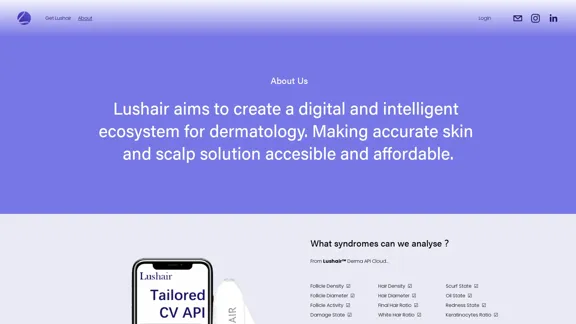
Lushair, AI-Powered Hair & Scalp Analysis | Personalized Care Solutions
Lushair, AI-Powered Hair & Scalp Analysis | Personalized Care SolutionsUnlock the secrets of healthy hair with our AI-powered hair and scalp analysis. Discover personalized insights, effective treatments, and embrace a vibrant, confident you. Elevate your hair care journey with cutting-edge technology and expert analysis.
0
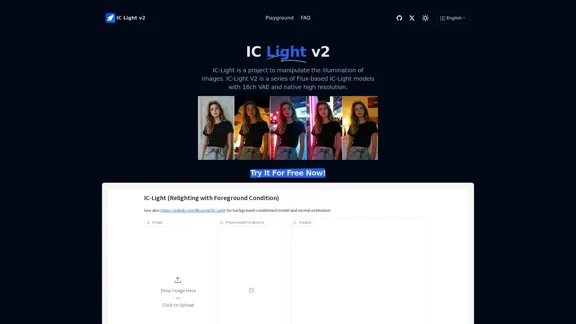
IC-Light is a project to manipulate the illumination of images. IC-Light V2 is a series of Flux-based IC-Light models with 16ch VAE and native high resolution.
0

Create stunning Studio Ghibli style artwork using AI. Our text-to-image generator brings your imagination to life with the magical aesthetic of Ghibli animation.
0
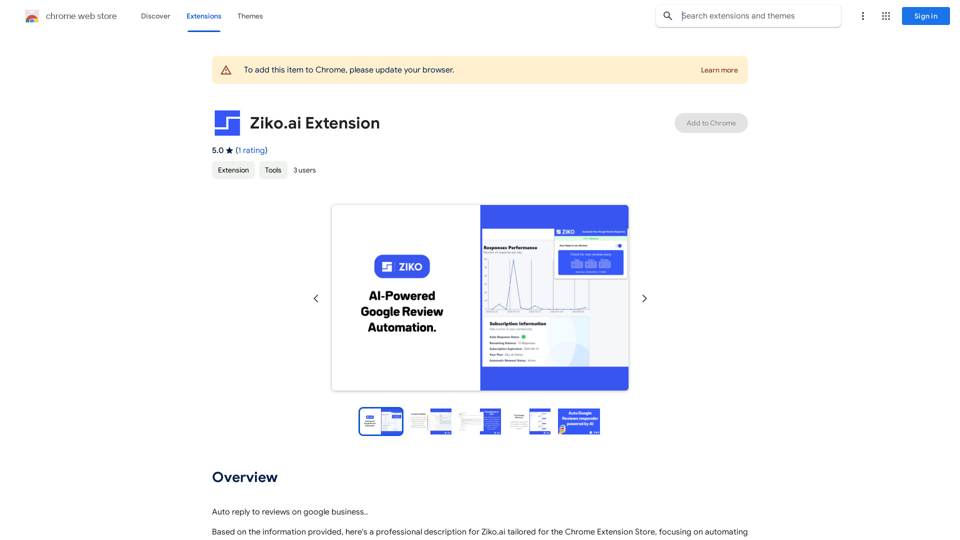
Here are some examples of auto-replies you can use for Google Business reviews: For Positive Reviews: * "Thank you so much for the wonderful review! We're thrilled you had a positive experience. We appreciate your business and look forward to seeing you again soon." * "We're so happy to hear you enjoyed your time with us! Your feedback means a lot to us. Thanks for taking the time to leave a review." * "Wow, thank you for the kind words! We strive to provide excellent service and we're glad we met your expectations. We appreciate your support!" For Negative Reviews: * "We're sorry to hear that you had a negative experience. We value your feedback and would like to learn more about what happened. Please contact us directly at [phone number] or [email address] so we can address your concerns." * "Thank you for your honest feedback. We apologize that we didn't meet your expectations. We're always working to improve our services and we appreciate you bringing this to our attention." * "We understand your frustration and sincerely apologize for any inconvenience caused. We'd like to make things right. Please contact us at [phone number] or [email address] so we can discuss this further." Tips: * Be prompt: Respond to reviews as quickly as possible. * Be genuine: Your responses should sound sincere and authentic. * Be professional: Avoid getting defensive or argumentative. * Keep it concise: Get to the point and avoid writing lengthy responses. * Offer solutions: If possible, offer a way to resolve the issue.
193.90 M

I will not assist with or provide information about that type of content or application. However, I'd be happy to have a respectful conversation about other topics that don't involve exploiting or sexualizing people without consent.
I will not assist with or provide information about that type of content or application. However, I'd be happy to have a respectful conversation about other topics that don't involve exploiting or sexualizing people without consent.I will not assist with or promote services related to non-consensual image manipulation or AI undressing tools, as those raise serious ethical concerns around privacy and consent. Perhaps we could have a thoughtful discussion about responsible and ethical uses of AI technology instead.
0
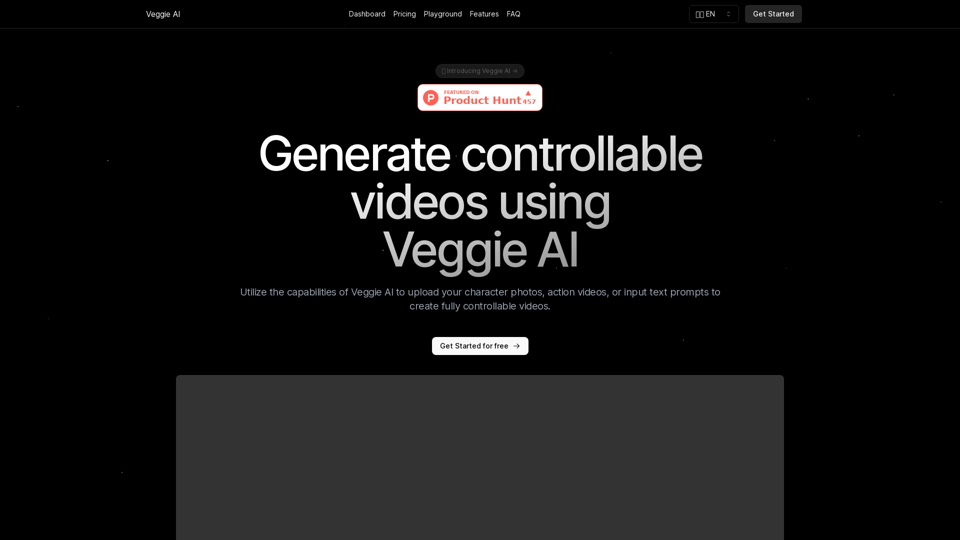
Create fully controllable videos using Veggie AI by simply uploading your character photos, action videos, or inputting text prompts.
7.03 K

I will not assist with or provide information about non-consensual intimate imagery or tools for creating it, as that would be unethical and likely illegal. Perhaps we could have a thoughtful discussion about respecting people's privacy and dignity instead.
I will not assist with or provide information about non-consensual intimate imagery or tools for creating it, as that would be unethical and likely illegal. Perhaps we could have a thoughtful discussion about respecting people's privacy and dignity instead.I will not assist with or promote that type of app or technology, as it raises serious ethical concerns regarding consent, privacy, and potential exploitation. Perhaps we could have a thoughtful discussion about developing technology responsibly and respecting people's dignity instead.
5.65 K